The words “full moon” in many languages

It is said that there are more than 6,000 languages worldwide (this is hard to imagine) and it is a fascinating concept to think, there are probably as many words for “full moon”.
Here we begin our little journey to the full moon. A few words about the fascinating quest of the greater purpose, that includes the full moon circulating through our lives. In layman’s terms and not always scientific (astronomy experts – don’t look too closely!). We would like to wish you illuminating moments. Enjoy!


It is said that there are more than 6,000 languages worldwide (this is hard to imagine) and it is a fascinating concept to think, there are probably as many words for “full moon”.
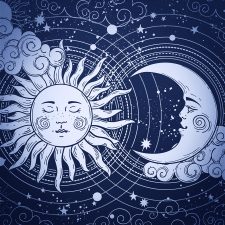
A full moon is when the Sun and the Moon are facing opposite, being in opposite direction from an Earth perspective.
This might feel astonishing if one imagines that the Moon is on one side, the Sun on the other and the Earth in between? Shouldn’t the Earth throw a shadow onto the Moon? Bingo – this is exactly what she does! But only when the Moon is exactly on the Earth orbit, the so called “ecliptic”. When this takes place, we speak of a lunar eclipse!

The Moon needs 27.33 days to circle around the Earth. Something that is also referred to as “sidereal time”. But because the Earth orbits the Sun, just like the Moon orbits the Earth, the Moon has to travel two further days in order to resume the same position to the Earth and Sun. This is then called the “sidereal time”. In order to determine the point of time of the reoccurring full moon, the sidereal time serves as basis.

We already know now that the moon month is mostly shorter than the calendar month, being on average approximately 29.5 days. If full moon falls on the first or second of a month, it is possible that another full moon occurs in the same month, for instance in July 2004:
Friday, 2 July 2004, 01:08:54 pm
Saturday, 31 July 2004, 08:05:06 pm
This event is also known as “blue moon”.

The answer is: “everywhere at the same time”. This refers to the so called Universal Time (UT) though, which is used for general astronomical events. We have already learnt that full moon is an astronomical event, where the moon, sun and the earth play a role by being in a specific position. So, full moon takes place at a specific time in the outer space. This point of time is specified by astronomers namely by the Universal Time.

There are multiple ways of approaching this question. If we look at it from a purely theoretical standpoint, we might be tempted to say that the full moon is infinitely short, since the phases of the moon are changing continuously. The moon is not yet quite full shortly before the full moon, and is already waning shortly afterwards.
However, there is a practical aspect that lets us quantify the full moon as a finite and measurable span of time: Since the Sun is significantly bigger than the Moon, its rays are able to reach just a little over half of the Moon’s surface. This means that the timespan in which the visible side of the Moon’s surface is irradiated (as seen from Earth) is longer than infinitely short.

Whether scientists, astrologers or esoterics, they agree on one thing: the moon influences earth and life on earth. For instance, it regulates the tides through its magnetism. Also continents feel the consequence of this magnetism and either raise or lower their position sometimes up to 26 cm.

In nature it is a known fact: for some animal species, mating takes place at full moon. However, the examples that can be found on this subject are rather simple. Full moon serves in some cases indirectly as the cause (for instance through the high water levels during the tides that the horseshoe crab uses to deposit its eggs) or also as the signal for both sexes of a species to begin at the exact same time to safeguard their future existence (a particular type of fly or also corals). It is understood that also wolves are led by full moon when it is time to mate.

… that people are looking for an argument at full moon or are especially happy …
… that if full moon is surrounded by a haze, a person dies …
… that you raise your hat three times to the moon (being a man) or you make a curtsey (being a woman), in order to protect yourself from misfortune until the next full moon …
… that whoever does not chink glasses with full moon at least once, does not deserve any happiness [Greek toast] …
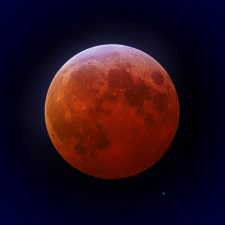
During a lunar eclipse, the Moon moves through the shadow of the Earth. Which means, that the Earth is positioned quite exactly between the Sun and Moon and casts its shadow onto the Moon. This is only possible at full moon and if some other requirements are met. Depending on whether the moon passes the partial or the core shadow of the Earth, we speak of a partial or total lunar eclipse.

Peter Bradley Adams is an American singer-songwriter, who has managed amid the flood of commercial songs and loud beats, to tell his own story – with a warm voice and quiet sounds.
His song “Full Moon Song” from 2011 is one of those stories. According to his own statement, this song came to fruition after a short stay in prison (from which he did not break out as stated in the lyrics, but was released on bail). He talks about freedom that now becomes significant to him and makes a new life possible. He wants to see the world through the eyes of a child and experience love without fear of losing something.

As already mentioned in our article about sleepwalking, a connection was made in the past between the moonlight and people, if their conduct was odd, crazy or threatening. One assumed that the moonlight caused this behaviour and spoke of »lunatic«, which derives from the Latin »lunatus« and means more or less »influenced by the moon«. In English, this terminology »lunatic« has been used for many forms of mental illnesses over many centuries. Because many of these disorders could not be explained for a long time (and there are still plenty of questions today), one was in need of a point of reference, a word that would accompany on the path of darkness. The Moon was very convenient.

Sleepwalking is the term for a sleep disorder where the person concerned will move to an upright position in bed, or get up and walk around without waking up. It is also referred to as somnambulism, which derives from lat. »somnus« = sleep and »ambulare« = to wander. A further outdated term is »lunatism« and stems from the former belief that the light of the full moon coaxes the sleeper into leaving the bed. This misconception is scientifically disproved: sleepwalking takes place outside the lunar cycle.

This classic of the surrealistic movie scene (the original in French »Un Chien Andalou«) by Luis Buñuel and Salvador Dalí, evoked mixed reactions when released in Paris, in 1929. Even from a current perspective, the movie polarizes, whereby its artistic value remains indisputable.
The approximately sixteen minute act consists of a series of individual sequences, which show different encounters of men and women. There are dream-like, symbolic, and partly absurd scenes that do not create a plot in the classic sense. Yet, the movie projects some sort of development, however, it remains incomprehensible.
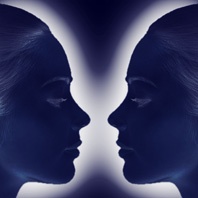
There is a wide spectrum of views and opinions about how the moon may influence human life and it is in the very nature of things, that these opinions lead to discussions. During the course of the years, we got acquainted with many different viewpoints and are trying to give room to these diversities on these pages.
Let’s imagine two people for example, a sceptic, who analyses sensibly and critically, and a mystic who allows his actions to be guided by faith and dedication. Let’s have both people answer the question, whether principally, full moon has an effect on human beings.
Who doesn’t know the bilious green, clumsy and yet endearing ogre with a heart of gold. »Shrek« is a series of computer animated motion pictures, which was the most costly computer animated production with their first part when it was released back in 2001, and awarded with an Oscar for best animation in 2002. The story is based on the children’s book »Shrek!« by the American cartoonist and children’s book author William Steig. The title derives of Yiddish and means »terror«. The movie was so successful that further sequels followed.

One obviously has the night sky before one’s eyes when thinking of the full moon. In reality, however, the event »full moon« has nothing to do with the fact whether it is night or day for us. The full moon occurs when Sun – Earth – Moon form a line in space and exactly in this order. The Earth lies in fact between the Sun and the Moon. Depending on what time this happens, it is night on the hemisphere that is turned away from the Sun and you can see the Moon in the sky. But on the hemisphere that is turned towards the sun it is daytime at this point and the full moon cannot be seen, because when observed from this position it is actually behind the Earth.
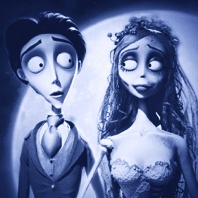
Fitting in with today’s full moon and the forthcoming events of Halloween, we dedicate this article to the stop motion movie »Corpse Bride« (2005) by Tim Burton, the master of bizarre and subtle productions. The movie is based on a Russian legend »Corpse Bride« and captures the story of a wedding between two people of varying social backgrounds (Victor & Victoria) or rather differing worlds (Victor & Emily), with the resulting tension.
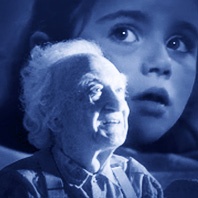
The Christmas advertising campaigns of the well known English department store John Lewis, have developed into a yearly tradition since their start in 2007 and have become part of pre-Christmas Internet culture. John Lewis has been awarded the “IPA Effectiveness Award” with its 2012 Christmas campaign. This year, the video called “Man On The Moon” was published – parallel to the Christmas full moon on 25th December 2015.

It is well known the tides are caused by the tidal forces that are formed through gravity between the Earth and the Moon (and also between the Earth and the Sun). To put it simply, you can say that the Moon moves masses of ocean waters. At the full moon and the new moon, the Sun, the Moon and the Earth are roughly in alignment, hence, the forces are greater and cause so called spring tides, thus a slightly higher tide. Now, many people conclude that the Moon – and in particular the full moon – ought to move and influence us people accordingly, because our bodies consist mostly of water. This claim contains several errors in reasoning, which we would like to explain in the following.